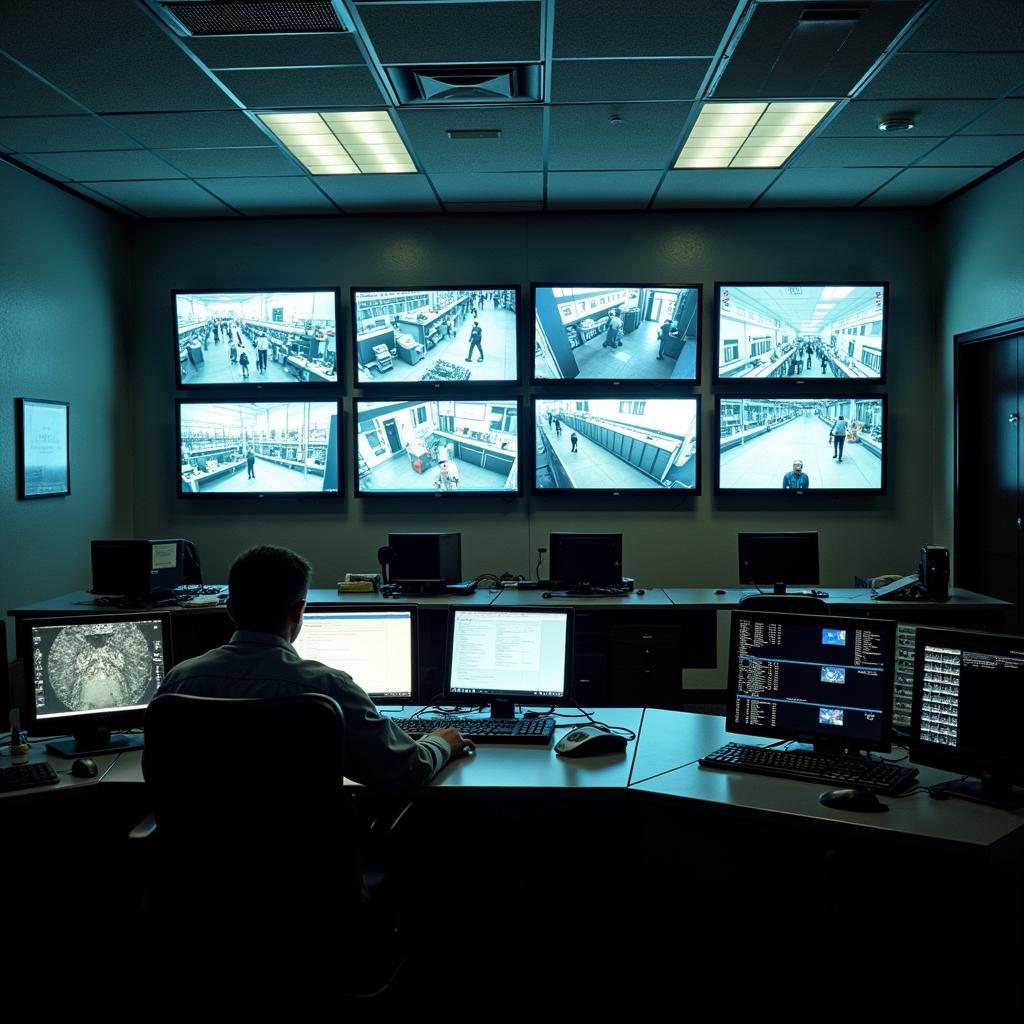Prison Electronics: Understanding the Landscape
November 6, 2024Prison Electronics encompasses the devices and systems used within correctional facilities. These range from security systems like surveillance cameras and door controls to communication tools and inmate management software. This crucial technology plays a vital role in maintaining order, security, and facilitating rehabilitation within the complex environment of prisons.
The Role of Security in Prison Electronics
Security is paramount in correctional facilities, and prison electronics forms the backbone of these systems. Surveillance cameras, strategically placed throughout the prison, provide constant monitoring of inmate activity, helping to prevent violence, escapes, and other illicit activities. Electronic door control systems regulate access to different areas within the prison, restricting movement and ensuring that inmates remain within designated zones. Perimeter security systems, incorporating motion detectors, alarms, and infrared sensors, further enhance security by detecting and deterring unauthorized entry or exit.
 Prison Security Electronics System
Prison Security Electronics System
These sophisticated electronic systems not only enhance security but also contribute to creating a safer environment for both inmates and staff. By deterring and detecting potential threats, they minimize the risk of incidents and create a more controlled environment.
Communication and Inmate Management with Prison Electronics
Beyond security, prison electronics also plays a crucial role in communication and inmate management. Inmate telephone systems, often equipped with monitoring and recording capabilities, allow inmates to maintain contact with the outside world while also preventing the coordination of illegal activities. Inmate management software helps track inmate information, including their criminal history, medical records, and disciplinary actions, simplifying administrative tasks and improving efficiency. These systems often integrate with other prison electronics, such as electronic kiosks, which allow inmates to access information, submit requests, and communicate with staff electronically.
This streamlined approach to communication and management not only reduces paperwork and administrative burden but also contributes to a more organized and efficient prison system.
Addressing the Challenges of Prison Electronics
While prison electronics offers significant benefits, it also faces certain challenges. Maintaining these complex systems requires specialized expertise and ongoing maintenance. Furthermore, ensuring the security and integrity of these systems is crucial to prevent unauthorized access or manipulation. Addressing these challenges effectively requires adequate funding, trained personnel, and robust cybersecurity measures.
Maintaining System Integrity and Security
One of the key challenges in managing prison electronics is ensuring system integrity and preventing unauthorized access. Implementing strong cybersecurity measures is paramount to protect against hacking, data breaches, and other cyber threats. Regular system updates, robust firewalls, and intrusion detection systems are crucial components of a comprehensive security strategy. Training staff on cybersecurity best practices is also essential to mitigate human error and reinforce security protocols.
Dr. Sarah Chen, Cybersecurity Expert at SecureTech Solutions, emphasizes the importance of ongoing vigilance. “Prison electronic systems are attractive targets for cyberattacks. Constant monitoring and proactive security measures are essential to stay ahead of evolving threats.”
 Prison Electronic System Maintenance
Prison Electronic System Maintenance
The Future of Prison Electronics
The future of prison electronics promises further advancements in technology and integration. Artificial intelligence and machine learning are expected to play an increasingly important role in analyzing data, predicting potential security threats, and optimizing resource allocation. Biometric identification systems could further enhance security and streamline inmate management processes. Integrating these emerging technologies with existing systems will contribute to safer, more efficient, and more effective correctional facilities.
Conclusion
Prison electronics plays a crucial role in maintaining security, facilitating communication, and streamlining inmate management within correctional facilities. While challenges remain, ongoing advancements in technology and a focus on cybersecurity will continue to shape the future of prison electronics, leading to more secure and efficient prison systems. For any assistance or further information, please contact us at Phone Number: 0915117113, Email: fanyamal@gmail.com or visit our address at To 3 Kp Binh An, Phu Thuong, Vietnam, Binh Phuoc 830000, Vietnam. We have a 24/7 customer support team.